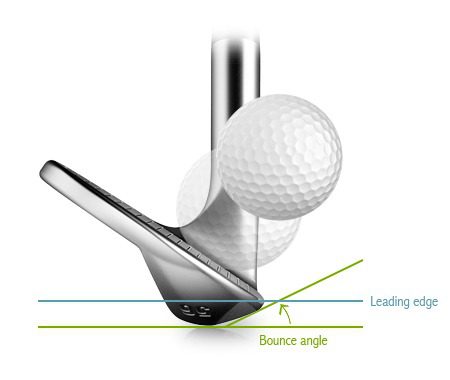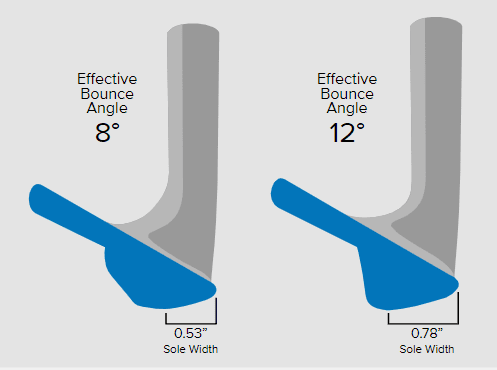Whilst watching the golf coverage over the last few weeks, a regular phrase kept popping up from the commentary team…
“He used the bounce well”
But what does this actually mean? People often refer to this statement when a players wedge interacts with the ground well and they hit a nice golf shot, but this is slightly misleading…
Today we are going to explore what the bounce is, why it is important and look back at this statement from the commentators with a little more understanding of the bounce.
What is the bounce?
Before we talk about the bounce, we need to define the leading edge. The leading edge is as the name suggests, is the front edge at the bottom of the golf club. It is the blue arrow in the picture below.
The bounce is defined by Vokey as the angle between the leading edge and the lowest part of the sole, as demonstrated by the green arrows in the below image.
Sounds easy so far… however it starts getting more complex when we add “effective bounce” and “actual bounce” to the mix.
Here, we have two wedges made with the same actual bounce. However, because the sole width has changed, the effective bounce has become different… the smaller sole width has a smaller effective bounce angle and the wider sole width has a bigger effective bounce angle.
Why does this matter to me?
Because… when golf manufacturers print on the club what the bounce angle is… sometimes this is the actual bounce, not the effective bounce. So I tend to pay more attention to not the number they print, but the shape of the sole and how close the leading edge sits to the ground. If its got a really narrow sole and the leading edge is square against the floor… it’s got zero bounce! If it has a wider sole with the leading up sitting above the ground so you can get your finger under the club… it has a lot of bounce.
So, what bounce is right for me?
Typically, if you have a very sweepy style in your short game, then less bounce and a narrow sole will work best. This will especially apply if you play at golf courses which have tighter lies, such as links golf courses.
If you have a more digging style to your short game and take some divots instead of sweeping the ball off the top of the grass, you will benefit from having a wider sole with a bit more bounce.
If you do something in the middle, or like to vary your delivery then you can find options across the manufacturers in which you can manipulate the bounce, based on how you sit the club at address. For example, the M Shape in Vokey, has been shaped so if you address the club with a little forward shaft lean and a little toe down… then you will have a lot less bounce then square.
You can see from the range of grinds Vokey offer that they are all designed slightly differently in their shape and style.
This is not me saying “Vokeys are the best” – pretty much every wedge manufacturer has followed this guideline over the last few years.
Back to the commentators…
“He used the bounce well”
What does this actually mean? Well it means that all the tour pros have been fitted for a bounce preference, for EACH of their wedges… yes that is each wedge! Most players what their lob wedge to do something different to their gap wedge and therefore will require different shapes and designs.
It also means they have interacted with the ground well, so the bounce has “bounced” (I prefer glided) through the grass and popped the ball with the correct launch and spin.
Imagine you have no bounce on a club and you were really steep and digging into the ground, the club is not going to glide or bounce through the ground… it is going to slam 4 feet underground with the ball going 2 yards in front of you!
So, is it technique or equipment?
Your technique has a massive part to play on using the bounce correctly. We see too many golfers who dig the club into the ground and struggle for a consistent strike. However, if you have the wrong bounce for your technique, you are already off to a bad start and the chances of hitting a nice shot are significantly decreased.
What can I do in technique to use the bounce?
This is where we come in… making you understand how you currently deliver it and why you see the shots you see. Then, how can we help you control your club much better, so you use the bounce more consistently and hit much better chips and pitches.
Me and Rob were greatly shown this in much detail from James Ridyard (tour short game instructor) when we went to his certification programme.
If you would like to learn more about your short game including using the bounce, have you got the right bounce, or club selection when round the greens, get in touch to book a session round our short game area here at Norwich Family Golf Centre.
Lewis Clarke
@LClarkePCoach






